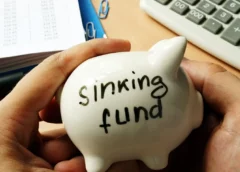
Introduction
Managing personal finances effectively requires various strategies to meet both short-term and long-term goals. One powerful yet often overlooked tool is the sinking fund. This article will explain what a sinking fund is, how it works, and why it can be a valuable part of your financial planning.
What is a Sinking Fund?
A sinking fund is a dedicated pool of money that you set aside over time to pay for a specific future expense. Unlike a general savings account, a sinking fund is earmarked for a particular purpose, which helps you avoid dipping into it for other needs. This financial strategy helps you plan for large expenses without incurring debt.
How Does a Sinking Fund Work?
- Identify the Purpose: Determine what you need the sinking fund for. This could be for car repairs, a vacation, a new appliance, or any other significant expense.
- Estimate the Cost: Calculate the total amount you will need. Be as precise as possible to ensure you save enough.
- Set a Timeline: Decide when you will need the money. This helps you determine how much to save each month.
- Regular Contributions: Divide the total amount by the number of months until you need the money. This gives you the amount to save each month. For example, if you need $1,200 for a vacation in 12 months, you would save $100 per month.
- Separate Account: Consider keeping your sinking fund in a separate account to avoid the temptation of using it for other expenses.
Benefits of a Sinking Fund
- Avoid Debt: By planning and saving for future expenses, you reduce the need to rely on credit cards or loans, which can carry high-interest rates.
- Financial Planning: It promotes disciplined savings and helps you manage your finances more effectively.
- Stress Reduction: Knowing you have money set aside for specific expenses can reduce financial stress and provide peace of mind.
- Flexibility: You can create multiple sinking funds for different goals, allowing for more precise financial planning.
Examples of Sinking Funds
- Home Maintenance: Set aside money for repairs, renovations, or unexpected home expenses.
- Vehicle Costs: Save for regular maintenance, repairs, or even the purchase of a new car.
- Holidays and Gifts: Plan for holiday spending or gifts throughout the year to avoid last-minute financial strain.
- Emergency Fund: Although different from a sinking fund, maintaining an emergency fund can also complement your financial strategy by covering unexpected expenses.
How to Start a Sinking Fund
- Choose Your Goal: Decide what you are saving for and how much you need.
- Open an Account: Set up a separate savings account for your sinking fund.
- Automate Savings: Set up automatic transfers from your checking account to your sinking fund account to ensure consistent contributions.
- Monitor Progress: Regularly check your sinking fund to ensure you are on track to meet your goal.
Conclusion
A sinking fund is a practical and effective way to manage your finances and prepare for future expenses. By planning ahead and saving regularly, you can avoid debt, reduce financial stress, and achieve your financial goals more easily. Whether it’s for a vacation, home repairs, or any other significant expense, a sinking fund can help you stay financially secure and organized. Start a sinking fund today and take control of your financial future.


